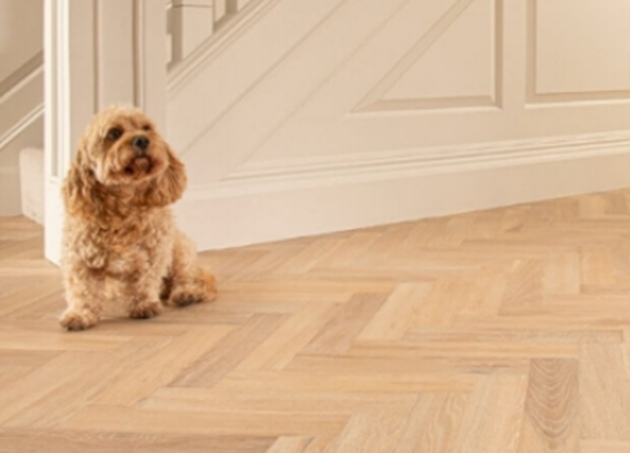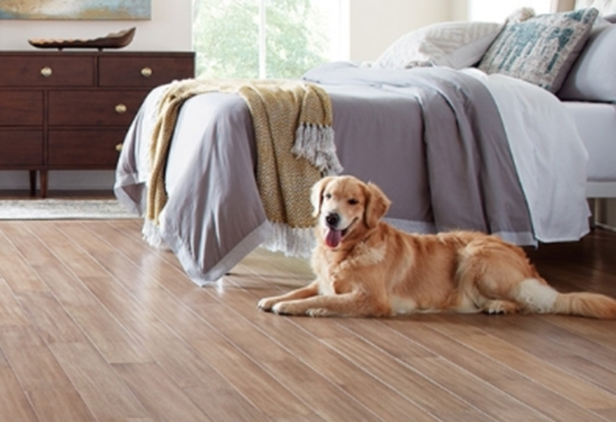Hardwood floors represent one of the most durable and long-lasting flooring options available today. Unlike carpet that needs replacement every 5-10 years or vinyl that wears out in 10-20 years, properly maintained hardwood can serve multiple generations. This longevity makes hardwood an excellent investment despite its higher upfront cost. The actual lifespan varies significantly based on wood type, installation quality, and maintenance habits. In this article, we’ll explore realistic lifespan expectations for different hardwood floors and provide practical tips to maximize their durability.

What Is the Average Hardwood Floor Lifespan by Type?
Solid Hardwood (30-100+ Years with Proper Care)
Solid hardwood floors are the gold standard for longevity, capable of lasting a century or more with proper care. These floors are made from single pieces of wood, typically 3/4 inch thick, allowing for multiple refinishing cycles over decades. Oak, maple, and hickory are particularly durable species that can withstand heavy foot traffic while maintaining their beauty. The key to their exceptional lifespan lies in their ability to be sanded and refinished 5-7 times, essentially giving you a new floor surface each time. Historic homes often feature original hardwood floors that are 80-100 years old, demonstrating this remarkable durability. However, this longevity depends on proper installation, climate control, and regular maintenance.
Engineered Hardwood (20-30 Years with Refinishing)
Engineered hardwood offers a more affordable alternative to solid wood while still providing good longevity. These floors consist of a real wood veneer (typically 1/16 to 1/8 inch thick) over a plywood base, making them more dimensionally stable than solid wood. While they can’t be refinished as many times, quality engineered floors can typically withstand 2-3 refinishing cycles over their lifespan. The thicker the top layer, the more refinishing potential the floor has. Higher-end engineered products with 4mm+ wear layers can last nearly as long as solid wood in moderate-traffic areas. However, cheaper versions with thin veneers may only last 15-20 years before needing replacement.
What Factors Most Affect Hardwood Floor Longevity?
Several critical factors determine whether your hardwood floors will last 20 years or 100. Installation quality is paramount – improperly acclimated or poorly installed boards are prone to warping and gapping. The subfloor condition also plays a major role, as moisture problems or uneven surfaces will shorten the floor’s life. Climate and humidity control are equally important, as excessive moisture causes cupping while dry air leads to cracking. Sun exposure can fade and dry out floors over time, making UV-protective window treatments valuable. Your choice of finish affects durability too, with aluminum oxide finishes lasting 10+ years between refinishes compared to 3-5 years for traditional polyurethane. Finally, lifestyle factors like pet claws, high heels, and furniture movement create varying degrees of wear that accumulate over decades.
What Maintenance Extends Hardwood Floor Life?
Refinishing Schedule (Every 7-10 Years for Solid Wood)
Regular refinishing is the single most important factor in maximizing hardwood floor lifespan. Solid hardwood typically needs refinishing every 7-10 years in moderate-traffic homes, while high-traffic areas may require it every 5-7 years. The process involves sanding off the worn top layer (about 1/32 inch) and applying new finish. Waiting too long between refinishes allows wear to penetrate deeper, reducing how many times the floor can be refinished. Look for visible scratches that catch your fingernail, dull areas where the finish has worn through, or discoloration as signs it’s time to refinish. Engineered floors have a thinner wear layer, so consult a professional to determine if and when they can be refinished without damaging the veneer.

Daily/Weekly Cleaning Habits That Prevent Damage
Consistent, proper cleaning prevents the abrasive damage that necessitates frequent refinishing. Daily dry dust-mopping removes gritty particles that act like sandpaper underfoot. Weekly damp mopping with a well-wrung microfiber mop and pH-neutral cleaner removes buildup without excessive moisture. Immediately wiping spills prevents water marks and staining. Place walk-off mats at all exterior doors to trap 80% of incoming dirt. Felt pads under furniture legs prevent scratches when items are moved. Maintaining 30-50% indoor humidity with humidifiers in winter and dehumidifiers in summer minimizes wood movement and cracking.
Protective Measures for High-Traffic Areas
Strategic protection in high-wear zones significantly extends floor life. Area rugs with breathable, non-staining pads should cover pathways in hallways and living rooms. Rotate rugs periodically to ensure even wear patterns. In kitchens, place mats near sinks and cooking areas to catch spills. Use protective films on chair legs in dining areas where chairs move frequently. Consider applying extra coats of finish in entryways during refinishing. Some homeowners opt for runner rugs in hallways that receive the heaviest foot traffic.
When Is It Time to Replace Hardwood Floors?
Even the best-maintained hardwood floors eventually reach the end of their lifespan. Structural issues like widespread cupping, sagging subfloors, or deep cracks between boards indicate replacement is needed. If more than 30% of the floor shows finish failure or deep scratches, refinishing may no longer be effective. Engineered floors with worn-through veneers must be replaced since they can’t be refinished. Termite damage compromising over 20% of the floor requires replacement for safety. Floors that have been refinished the maximum number of times have exhausted their lifespan. Persistent musty odors may indicate mold damage beneath the floor requiring replacement. When repair costs approach 50% of replacement cost, investing in new flooring makes more sense.
Conclusion
With proper care, your hardwood floors can remain beautiful and functional for generations. Follow a maintenance calendar: daily dust mopping, weekly damp cleaning, annual professional inspections, and refinishing every 7-10 years. Control humidity year-round and address spills immediately. For hardwood floor cleaning, use only recommended tools and solutions to avoid damage. Those looking for effective maintenance tools might consider products like eufy’s cleaning systems designed specifically for hardwood care. Remember that prevention is far more cost-effective than repair – protecting your floors from day one will maximize their lifespan. By treating your hardwood floors as the lifetime investment they are, you’ll enjoy their warmth and beauty for decades to come.